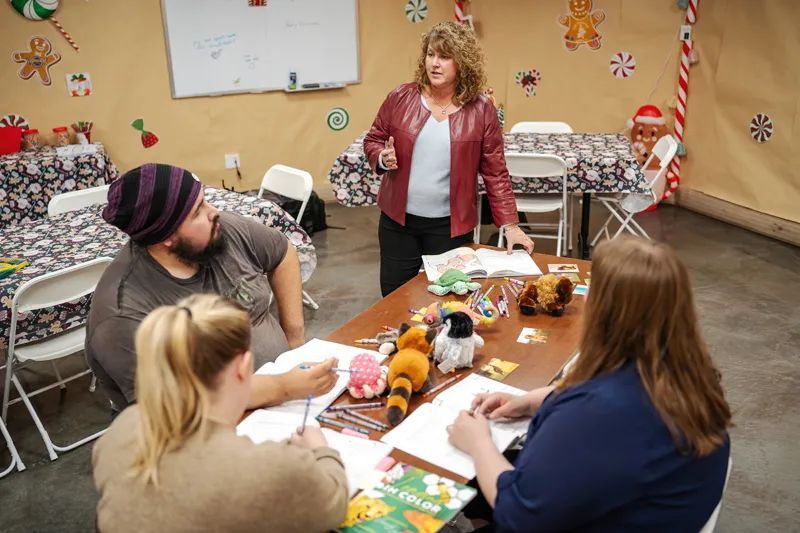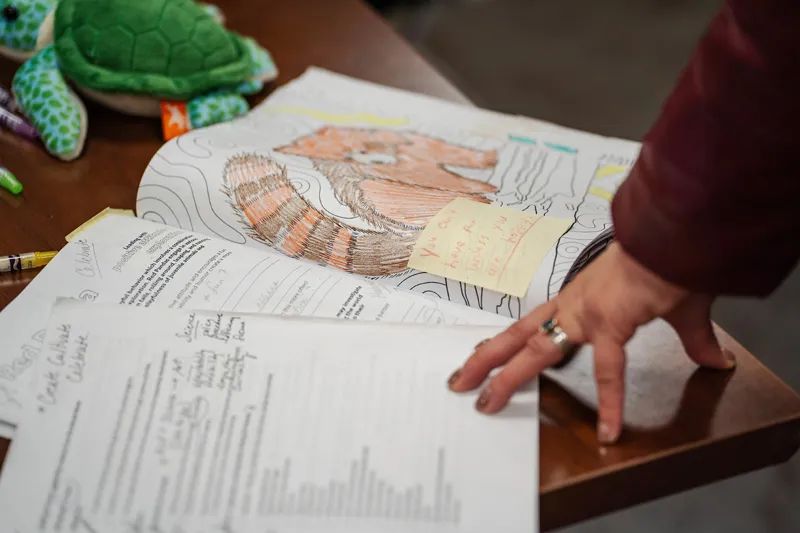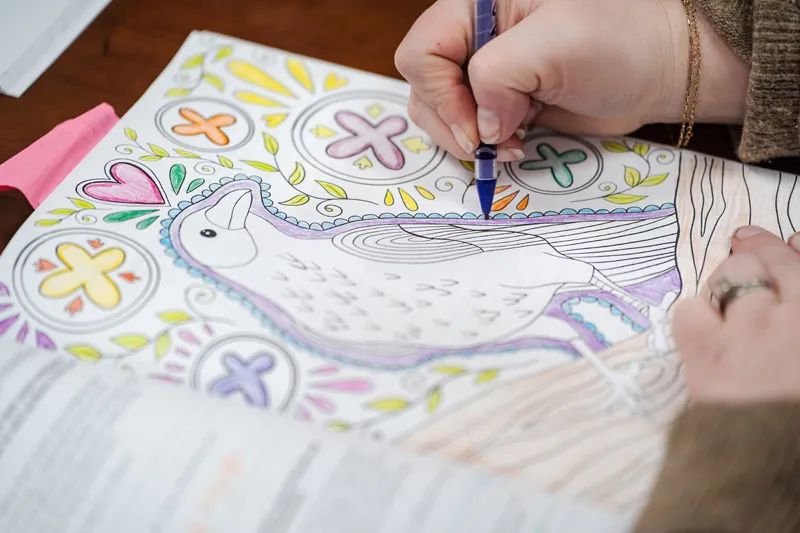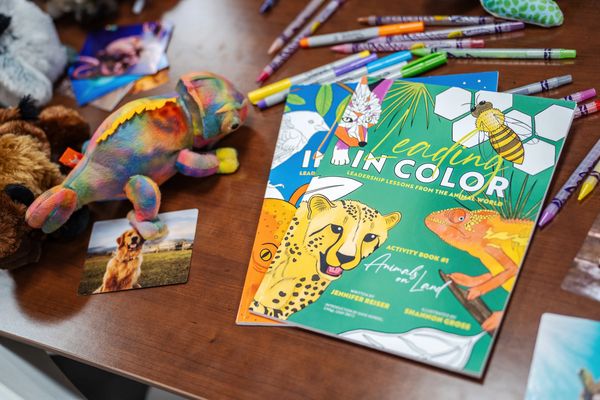-(1)web.jpg?fit=outside&w=1600&h=1066)
Leading In Color
Jennifer Reiser is passionate about bringing out the best in others
There seems to be no shortage of to-do lists, obligations and routines. When you take a closer look at how you spend your time, are you spending at least some of it pursuing your passions? Have you even identified what you’re passionate about? It was that question 20 years ago that rocked Jennifer Reiser’s comfortable and predictable world.
“I remember the very first leadership program I went to,” Jennifer says. “I was 35. I was sitting in a hotel room with people from across the country, paired up with a partner, and we were supposed to answer the question, What are you passionate about? I had absolutely no idea.”
With degrees in biology and chemistry, Reiser was working in environmental public health at the time. She could analyze some things with ease, but this question engaged her mind in a different way.
“The partner I was with for this exercise was very emphatic that I should have something I was passionate about,” she says. “I left that room crying because I could not come up with one thing. What I realized was, nobody had ever asked me that question, and you don’t have answers to things if you didn’t take the time to think about it.”
-(1)web.jpg?fit=outside&w=800&h=533)
Roughly two decades later, she’s had plenty of time to think about it, and today she answers without hesitation: “What I’m passionate about now is learning and helping others learn.”
Jennifer, who went on to serve as the chief operating officer for the Billings Chamber of Commerce for nearly 14 years, is now the proud author of a unique and purposeful coloring workbook called “Leading in Color,” which teaches people how to be effective leaders, through lessons inspired by the animal world.
“This workbook is about the intentional development of leaders, whether it’s developing yourself or your team or entire organization” she says.
The idea for the workbook came from Dave Nordel, who hosts the podcast, “Kangaroo Leadership.” He also wrote the introduction for the book, where he explains coloring as a simple yet potent tool that reduces stress, promotes mindfulness and enhances focus and concentration.
“Coloring combines your left brain and right brain, it’s therapeutic,” Jennifer says. “After I agreed with Dave that the book was a good idea, he said ‘I think you should do it.’”
web.jpg?fit=outside&w=800&h=533)
That conversation one year ago, set Reiser’s scientific and logical mind in motion. She built a spreadsheet where she researched and logged the traits and personality characteristics of animals and how they translate to humans. In the end, she chose an eclectic group of 48 animals of the land, sea and sky, with each being assigned two key leadership traits.
A polar bear, for instance, leads with courage and patience. Its commanding presence and strong sense of responsibility gives it the courage to approach large prey in harsh conditions. While the polar bear gets high marks for its leadership traits, some animals are less natural leaders.
“You look at the vulture who might lead with indifference and isolation,” she says. “They are very independent, not independent like strong, but isolated. They’re also scavengers, so they are opportunistic to some extent and they’re also taking advantage of someone else’s hard work.”
During her “Leading in Color” workshops, she prompts teams or one-on-one clients to identify their strengths and then find the animal in the book that shares those traits. They spend 15 minutes coloring before answering pointed questions on the opposite side of the page, questions designed to engage their creativity and critical thinking about their management or leadership style.
“An animal can’t decide they would like to be something else, but people can,” Jennifer says. “Maybe I have the leadership traits of a bison, of unity and support. I’m very cooperative in my work, but I need focus and vision for something, so I need to develop that or go find it in someone else.”
If focus and vision are what you’re looking for, Reiser says you’d want a cheetah on your team. Its speed and focus exemplify determination, confidence and fearlessness.
web.jpg?fit=outside&w=800&h=533)
The next time someone calls you a sloth, consider it a compliment. “You think of the sloth as slow moving, lazy, but what if you applied the traits of thoughtfulness to the sloth?” she says. “They are very patient, not reactive. They are considerate, deep thinkers going through every potential scenario before they make a move.”
Jennifer suggests thinking of your workplace as a habitat and creating an environment where every member can thrive. “If you have a team that is mostly safari animals, leading with speed, focus and vision, and you have a penguin in your midst who works with empathy and teamwork, how does that little penguin fit in?” she asks. “How long is that penguin going to stay working for you, if you don’t make some effort to leverage their strengths and include them?”
After researching and writing the book, Reiser reveals the animals with whom her leadership style most closely aligns. “The traits of the fox are strategy and cleverness. I’m putting pieces together before I move,” she explains. “I would also take the honeybee with focus and balance and the chameleon because of its adaptability.”
Those strong leadership traits led her to start a consulting business after leaving the Chamber of Commerce and she’s tapping into her science background as the director of operations for Chambers for Innovation and Clean Energy. It’s a national network of chambers of commerce, looking for ways to transition to a clean energy economy.
Thanks to that thought-provoking question 20 years ago in a hotel, Jennifer has not only identified her passion but is happily and fully engaged in it, even though she never saw it coming.
“It’s funny because I never wanted to be a teacher,” she says. “Part of what I love the most is helping people become better versions of themselves. My whole platform in the work I’m doing is investing in the individual, investing in the team, investing in the organization and then the entire community.”
YOU CAN FIND Jennifer Reiser’s Book, “Leading in Color: Leadership Lessons from the Animal World,” on Amazon or at Barnes and Noble online.
.jpg?fit=outside&w=1600&h=1067)











